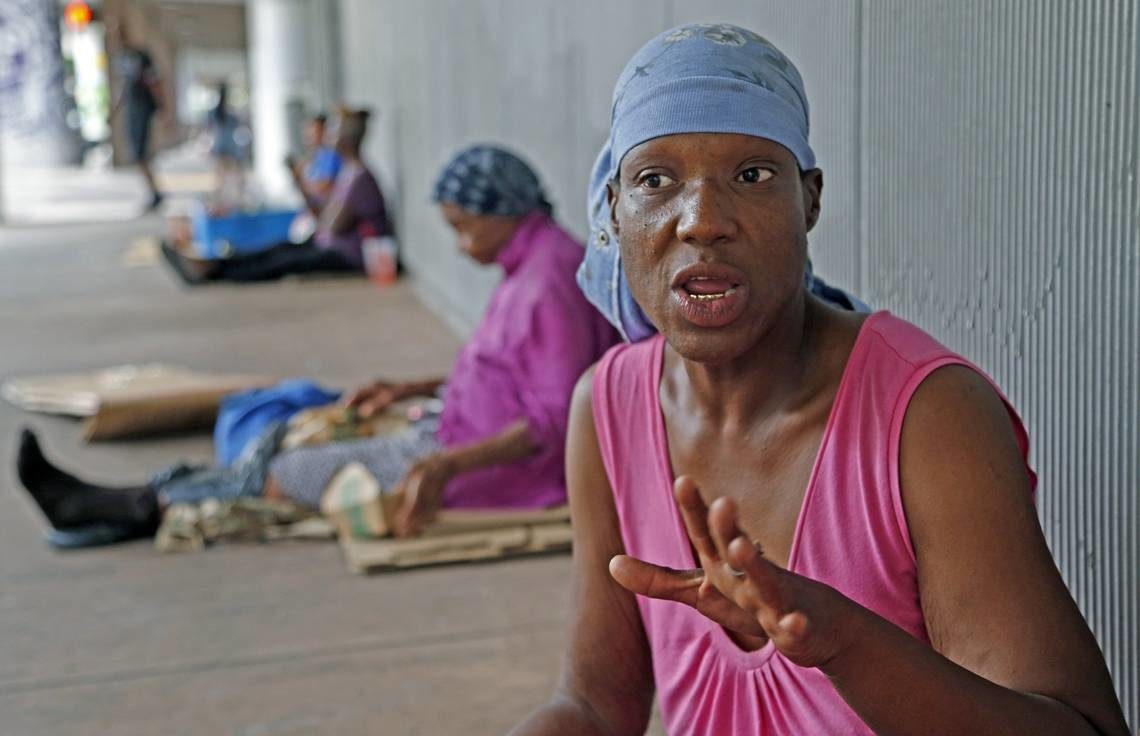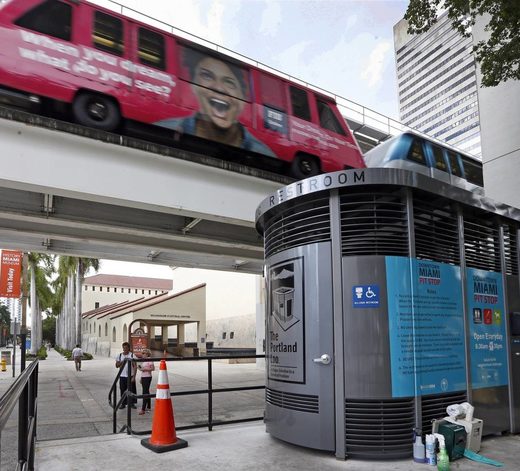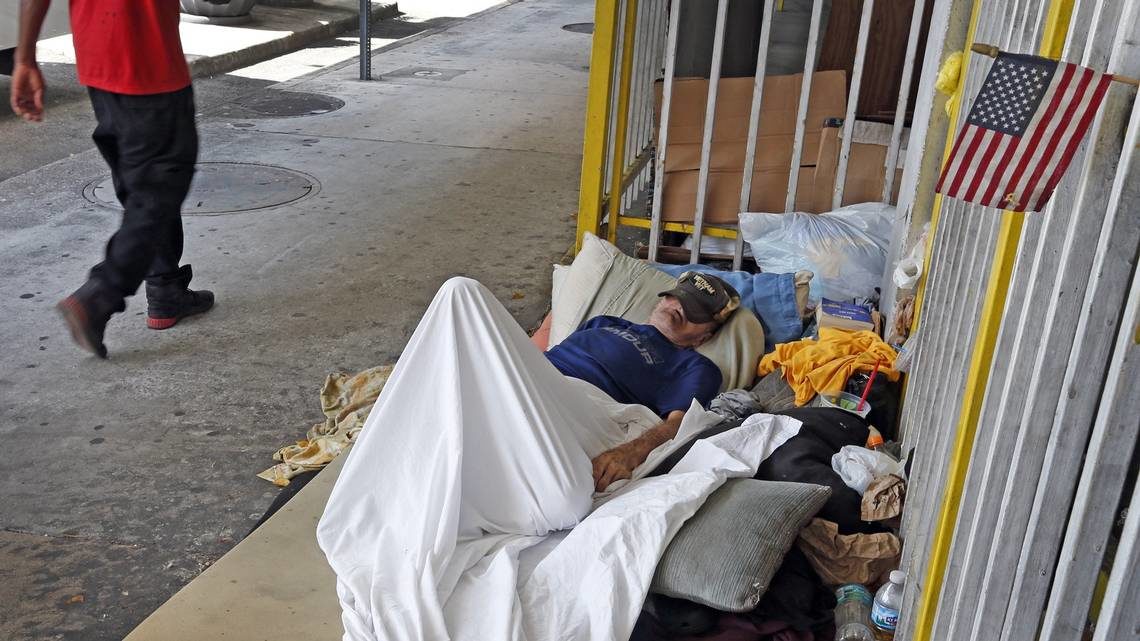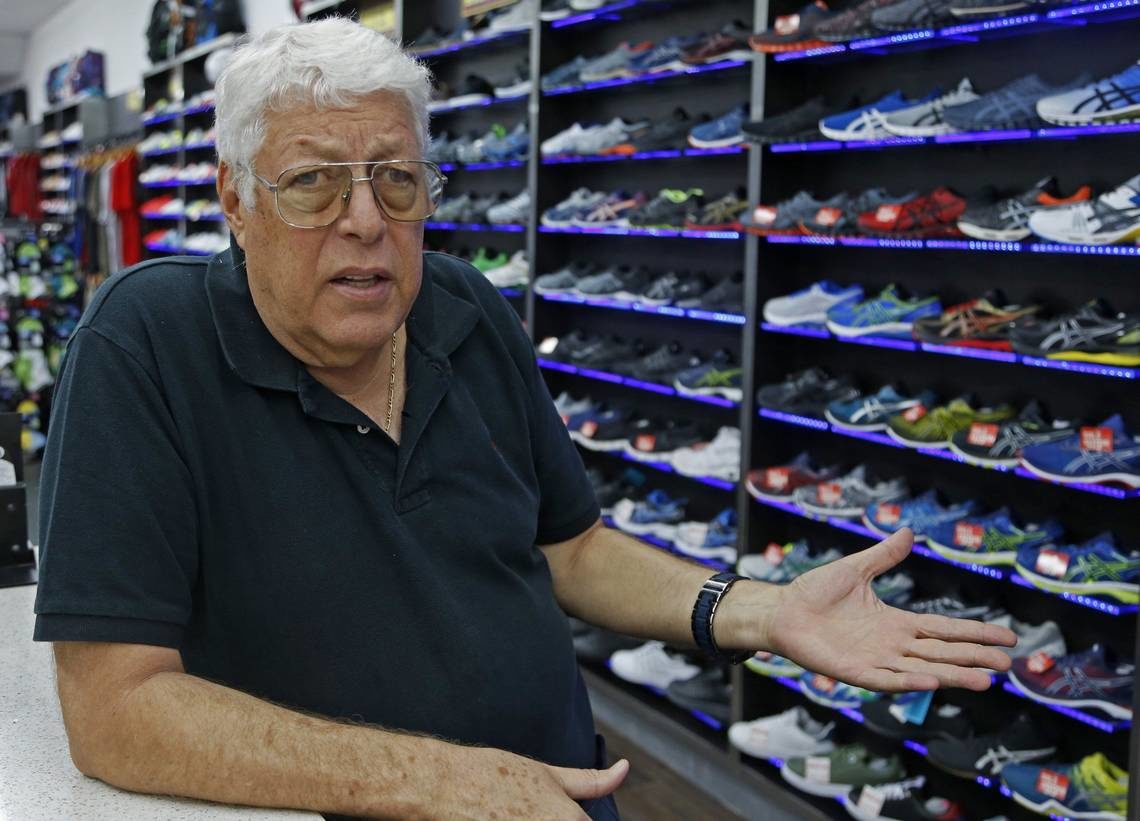
"The situation is the worst I've seen in my 25 years here," said business owner Jose Goyanes. "The stench is really bad, even after you hose it down. We see people urinating against buildings or pulling their pants down and squatting because they have nowhere else to go."
Deposits of human waste can be seen in planters, doorways, gutters — or right in the middle of the block. The pavement behind the old Macy's department store is soaked with urine. Feces ferment in front of vacant storefronts for days when there's no landlord to clean up. People who work and live downtown are calling in a Code Brown.
"It's prolific. It's on every block and at the base of most trees," said businessman Gary Ressler. "I can't bring national tenants here and walk through downtown without having them observe human feces littering the sidewalk."
There is no simple solution to the complicated homelessness crisis throughout the United States. In Los Angeles, 58,000 people do not have permanent housing and are living beneath freeways, on beaches and in tent cities. In Miami-Dade County, the total homeless population is down to about 3,700, but a critical shortage of public bathrooms for those 1,148 living on the street who can't or won't find room at a shelter makes it difficult for them to maintain sanitary personal hygiene.
"Most of us do not want to defecate or urinate in public," said David Beaty, a homeless man who came to Miami from Wisconsin. "It's like you're losing your dignity, your humanity. We're not animals. I personally use a cup and dump it because I don't want to smell my urine or anybody else's while I'm sleeping.
"If no bathroom is available, what are you supposed to do?"

"It's a delicate issue because you can't just round up people and make them disappear," Goyanes said. "Some refuse to move to a shelter even when you offer assistance. One way we can help them is by addressing the poop problem as a public health problem."
Only two public bathrooms are readily accessible to the homeless in the area where the problem is most acute: One in Bayfront Park on Biscayne Boulevard by the laser tower and one by the Main Library at 101 West Flagler St. Both are monitored by former homeless people employed as attendants who keep the bathrooms spotlessly clean and enforce the five-minute rule. They are open seven days a week but only from 8:30 a.m. to 8:30 p.m. Public restrooms inside the library and the Miami-Dade Government Center have even more limited hours.
"A 24-hour bathroom would be wonderful," said Kesia Hollins, who has been homeless for six years, since she lost her parents and Brooklyn home in a fire. "I try to be ladylike and respectful and hide when I go outside. We'd rather use a toilet. We don't want to be nasty and dirty."
The city opened its one freestanding stall last year by the library in a ribbon-cutting ceremony with attendant Cassandra Strozier, Mayor Francis Suarez and Commissioner Ken Russell, who called the bathroom part of "the city's compassionate approach" to the homeless population. The solar-powered structure has a steel toilet, hand-washing station and needle disposal receptacle.
That toilet and those at Bayfront Park have been used 89,217 times in the past 12 months, or an average of 244 times per day, according to the Downtown Development Authority, which has been integral in planning, funding and hiring staff for the Pit Stop Program.
The unit by the library was manufactured by Portland Loo for a price of $100,000, but the city spent a total of $312,976 to build it on a concrete platform with steps, ramp and handrails, which Russell admitted was "not cost efficient."
"The city, in its infinite wisdom, designs it so it becomes a boondoggle," Ressler said. "That expensive exception shouldn't be an excuse for not building more bathrooms. The two that we have are exceedingly successful and are used by homeless, non-homeless and tourists. It's not rocket science. You go to any major metropolis and they have public bathrooms."
Four years ago, the poop problem became so intolerable that the Downtown Development Authority created a "Poop Map" with smiling brown emojis designating each spot where poop was found during an eight-hour workday.
The map, meant to shame government leaders into action, received national attention. Miami borrowed the idea from San Francisco, which published its first "Poop Map" in 2013. Since then, San Francisco's homeless population has grown to more than 10,000, the city has erected 25 portable and semi-permanent Pit Stops and deployed a poop patrol Clean Team in the Tenderloin district. Two apps pinpoint trouble spots — SF311 and SnapCrap.
In Miami, the Downtown Development Authority has identified a handful of locations for new bathrooms and will discuss planning with the city at the end of October. But, says Russell, chairman of the authority, toilets are only part of the answer.
"The situation has to be addressed from all sides and homeless people must be treated humanely," Russell said. "We're in better shape than most places but we've seen the population numbers here plateau. How do we get to the next level? It's not only affordable housing but jobs, mental health, addiction treatment."

The city has scheduled regular cleanups, especially behind Macy's, where 100 homeless people sleep on the covered, lighted sidewalk. The "green shirts" of the city's Human Services team direct people in need to social services. A closed state facility for the criminally insane in Allapattah is due to be rehabbed into a treatment center for the homeless. Project Lazarus, sponsored by the Homeless Trust, dispatches roving teams of medical professionals to talk to homeless people, administer psychotropic medications and treat physical ailments.
The Homeless Trust is philosophically opposed to building more public bathrooms because the Trust's leaders believe they only encourage homeless people to stay on the streets rather than move to a shelter where they can receive a continuum of care, education, job training and financial support to make the transition to permanent housing.
"We won't pay for them, and that may seem insensitive on my part," said Ron Book, longtime chairman of the Trust, which has a $65 million annual budget funded in part by the county's 1 percent restaurant meal tax. "Bathrooms serve as a magnet for the population to congregate and it becomes a burden on that area. You could try moving them away from businesses and condos but where? You're dealing with homeless bathroom NIMBY."
Vietnam veteran Joe Wright, who was held in a POW camp for 2 1/2 years, has been living on the streets of downtown for 30 years. He works as an attendant in two parking lots and sleeps on a pile of blankets and pillows by a garage on South First Street. He uses bathrooms in Burger King and 7-Eleven where the employees let him in.
"We don't need more bathrooms. Spend the money on something else," he said. "I don't go to Camillus House or HAC [Chapman Partnership Homeless Assistance Center] either. It's a money-making racket. Shelters are worse than being in jail. Can't get no sleep. Do this, do that. I'm staying here."
The Trust is targeting the area with outreach efforts to move people into shelters.
"I hear the folks who work and live downtown, I get it," Book said. "I'm committing beds and units. But not public bathrooms. Our mission is to provide housing and end homelessness, not to spend money on revolving doors."
That philosophical feud has escalated again during the election cycle, with Russell running to retain his District 2 seat. Russell supporters say the excrement problem has been exaggerated to reflect badly on him.
"It's sad to frame this as a political problem," Goyanes said. "It's a sanitation problem. It's a societal problem. It's a problem that is hurting downtown Miami."
Ressler said he is frustrated by what he calls city government neglect of downtown, which has seen its residential population boom while the commercial core struggles to partake of any renaissance.
"The city has no strategy and no will to improve conditions on our streets," said Ressler, principal of the TILIA Companies, a family-owned real estate and financial services firm based downtown since 1979.
Charles M. Zaine, owner of the Area Code 305 Sports store, said business is down and rent is up on Flagler Street, where there are some 200 vacancies.

Miami has fared better than most cities since the Trust was created in 1993, Book said. He listed 14 major U.S. metro areas that had homeless populations of 8,000 to 15,000 25 years ago, with Miami-Dade on the lower end of that range. Miami has reduced its total by more than half while the numbers have skyrocketed in other cities. In Los Angeles, arson attacks on the homeless and violence within cramped encampments have exacerbated a growing crisis.
"We have leadership, money and a plan," Book said. "It's' working."



Call it a Free Sheetz Zone.
R.C.